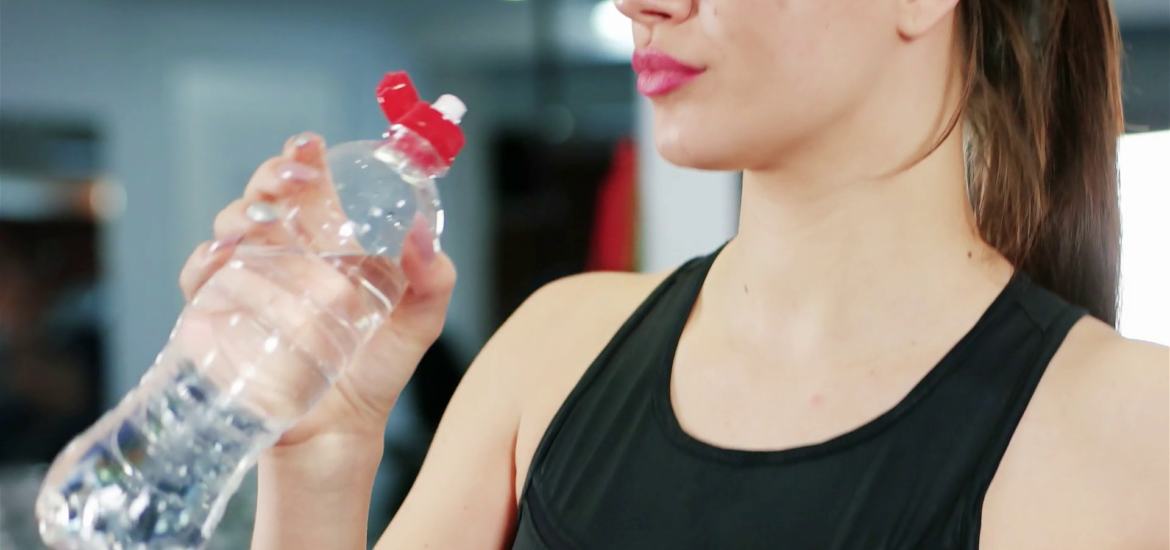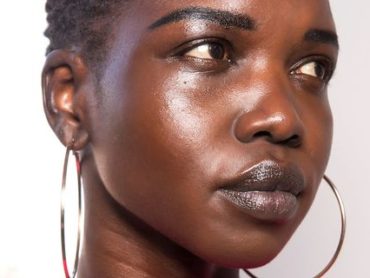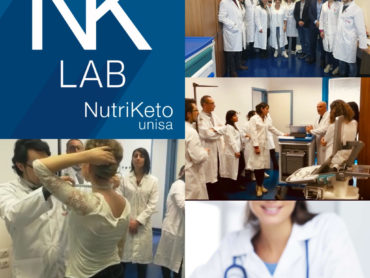Although all waters contain a modest mineralization, except for rainwater and distilled water, the law considers “minerals” those waters that originate from a stratum or underground deposit, come from one or more natural or perforated springs and they have particular hygienic characteristics and possibly health-promoting properties (1). For drinking water, on the other hand, we mean: “treated or untreated water, intended for drinking, for the preparation of food and beverages, or for other domestic uses, regardless of their origin, whether they are supplied through a distribution network, tanks, in bottles or in containers. ”
In essence, the fundamental difference between drinking water and a mineral water is that mineral water must possess the requisites of microbiological purity and chemical-physical constancy at the source, while drinking water can also originate from rivers, lakes, streams, etc. .., acquires its potability through chemical-physical and microbiological treatment processes.
The characteristics and the healthy properties of a mineral water depend on the source of origin and the mineral salts that are dissolved during the underground journey through the rocks, before flowing to the surface. The mineral waters can contain carbon dioxide and, among these, the waters that, to the scaturigine, have a content in carbon dioxide higher than 250 mg / l. The presence of carbon dioxide has an important action at the level of the gastric mucosa on which induces vasodilatation and hyperemia, excites the secretions and peristalsis, so, these bicarbonate-calcium waters, transit rapidly through the stomach, not without the carbonates have performed at their buffer function (2,3).
In sports, the use of specially formulated drinks to support performance and optimize recovery after exertion is widespread. In particular, isotonic drinks are used that have the same osmolarity of the plasma as their assimilation takes place in medium-fast times and are excellent at any time; hypotonic drinks are assimilated very quickly and are excellent during the effort while hypertonic drinks slowly assimilate but allow energy recovery, so they are excellent after the effort.
Features of the hydro-electrolyte reintegration to optimize the athlete’s performance.
From what has been said, particular attention should be paid to the correct maintenance of the hydro-electrolyte balance, considering that moderate exercise usually produces a loss of perspiration quantifiable in 0.5-1.5 liters / hour and among the factors that intervene in the determining it plays a key role in the initial hydration and nutrition conditions, the external temperature and the type of physical exercise. A particular attention to the strategies put in place to guarantee the best fluid balance, has in fact been found to be an excellent tool to improve performance (4), as well as to reduce the risk of post-exercise cardio-vascular events (5). A greater knowledge of the correct rehydrating modalities could in fact guarantee a reduction of the pathological events linked both to the state of dehydration and to the hyperhydration often resulting from strenuous stress, due not only to changes in the skin (6), but also to the loss of lucidity and decrease of the cognitive abilities that are established in these situations (7). Already in 1996 the American College of Sport Medicine had officially announced its position on the intake of fluid added with electrolytes and carbohydrates before, during and after exercise (8), and this orientation was then recently confirmed, recommending the maintenance optimal hydration both to improve performance performance and to ensure a good organic response to stress (9,10). Despite the beneficial effects of rehydration seem to be also related to climatic conditions (11), it is however now beyond doubt that this practice should always be carefully maintained in the athlete (12). As regards the quantity of liquids to be replenished, it is advisable to take between 600 and 800 ml / h (13), paying particular attention to the risks associated with hyponatraemia that may occur as a result of overhydration during long-term competitions. like the marathon (14).
To this end, a sort of real “drinking training” seems to be of particular relevance, which, progressively adapting the organism to the introduction of greater quantities of liquids, would improve its tolerance to water (15). As for the type of drinks to be used, it would seem that the addition of NaCl, reducing urinary filtration would result in a better rehydrating effect compared to hypotonic drinks (16) and for this reason other sources would show an advantage in the use of the various beverages present on the market compared to simple water, given their content as well as salts also in carbohydrates that guarantee an ergogenic effect (17). In fact, the addition of carbohydrates at a concentration of 3-5% could be useful in order to increase the level of performance, but this addition must not reach hyperosmotic concentrations in order to then produce a reduction in water absorption (28). It has also been observed that the presence in the intestine of hypotonic glucose solutions in association with sodium improves the absorption of water by virtue of the glucose-sodium transport system (19) and, based on this evidence, is expressly recommended the intake of beverages to which sugar and sodium have been added in order to reintegrate hydroelectric losses into long-term activities (20). The tonicity of the administered fluid is a parameter that would not lead to differences in the state of hydration, since no variations of this were found following the administration of fluids with different tonicity, nor were any differences in the tolerance to exercise due to the tonicity of the solution (21); on the other hand, food intake appears to have an influence on the state of hydration before carrying out the exercise as absorption, distribution and retention of water are positively regulated by nutrient ingestion in the two hours preceding exercise (22). But perspiration also induces the loss of abundant quantities of minerals, such as calcium and magnesium which can be replenished, as well as by using specific drinks, also by rich mineral waters of these micronutrients and the contribution to the dietary intake of these can occur especially in those who do not conduct a regular diet (23).
The water integration before the exercise.
There are many studies that investigate the incidence of baseline hydration status of the individual on achieving performance (24) and chronic hyperhydration can now be considered one of the tools to prevent or minimize the loss of electrolytes that occurs with work of endurance (25). The best indicated type of drink would seem to be hypertonic: glycerol, widely used in pathology, can certainly be widely used in physiology (26) with a dosage that has been standardized to 1 g / kg of body weight in 1.5 L of water to be taken between 60 and 120 minutes before exercise (27). This intake, by improving fluid retention, would reduce cardiovascular stress (28). The use of hypotonic drinks in large quantities would seem to facilitate the hyponatraemia, therefore it would seem useful to be more cautious even in recommending the quantity of liquids to be taken (29).
Water integration during the exercise.
Integration during exercise is of fundamental importance for long-term competitions, regardless of the quality of the performance (30). The introduction of fluids during exercise results to be strictly correlated to the plasma levels of electrolytes during the race (31) and must therefore be carefully modulated considering also the climatic conditions in which the effort is carried out. Actually the adaptation to the exercise, obtained progressively with the training, would also act on the neuroendocrine response to the dehydration that manifests itself with a decrease of vasopressin secretion, the antidiuretic hormone, but does not alter the perception of thirst and therefore the water intake (32). On the other hand, the type of drink taken during the effort would not seem to be decisive for the purpose of the answer on the volemic decline, for which both the hypo and the iso and hypertonic drinks would be equally indicated (33).
- Rizzo R. Scienza e tecnologia delle acque minerali e delle bevande. Pinerolo, Italia. 2005; 166-71; 260-2; 309-15.
- Bertoni M, Olivieri F, Manghetti M, Bocclini E, Bellomini MG, Blandizzi C, Bonino F, Del Tacca M. Effects of a bicarbonate-alkaline mineral water on a gastric functions and functional dyspepsia: a preclinical and clinical study, 46:525-31, 2002.
- Fornai M, Colucci R, Antonioli L, Ghisu N, Tuccori M, Gori G, Blandizzi C, Del Tacca M. Effect of a bicarbonate-alkaline mineral water on a digestive motility in experimental models of functional and infiammatori gastrointestinal disorders. May;30(4):261-9, 2008.
- Murray Rehydration strategies-balancing substrate, fluid, and electrolyte provision. Int J Sports Med. 19 suppl. 2:133-135, 1998.
- Von Duvillard SP, Braun WA, Markofski M, Beneke R, Leithäuser R. Fluids and hydration in prolonged endurance performance. Nutrition, 20:651-656, 2004.
- Veldhuijzen van Zanten JJ, Thrall G, Wasche D, Carrol D, Ring C. The influence of hydration status on stress-induced hemoconcentration. Psychophysiology, 42:98-107, 2005.
- Tomporowski PD, Beasman K, Ganio MS, Cureton K. Effects of dehydration and fluid ingestion on cognition. Int J Sports Med, 28:891-896, 2007.
- Convertini VA, Armstrong LE, Coyle EF, Mack GW, Sawka MN, Senay LC Jr, Sherman American College of Sport Medicine position stand. Exercise and fluid replacement. Med Sci Sport Exerc, 28:I-VII, 1996.
- Montain SJ. Hydration recommendations for sport 2008. Curr Sport Med Rep, 7:187-92, 2008.
- Von Duvillard SP, Arciero PJ, Tietjen-Smith T, Alford K. Sports drinks, exercise training, and competition. Curr Sport Med Rep, 7:202-208, 2008.
- Mora-Rodriguez R, Del Corso J, Aguado Jimenez R, Estevez E. Separate and combined effects of airflow and rehydration during exercise in the heat. Med Sci Sports Exerc, 39:1720172-6, 2007.
- Galloway SD. Dehydration, rehydration, and exercise in the heat: rehydration strategies for athletic competition. Can J Appl Physiol, 24:188-200, 1999.
- Schramm T, Predel HG. Volume and electrolyte disturbances in endurance sport. Internist (Berl), 47:1145-1150, 2006.
- Mettler S, Rusch C, Frey WO, Bestmann L, Wenk C, Colombani PC. Hyponatremia among runners in the Zurich Marathon. Clin J Sport Med, 18:344-349, 2008.
- Rehrer NJ. Fluid and electrolyte balance in ultra-endurance sport. Sports Med, 31:701-715, 2001.
- Merson SJ, Maughan RJ, Shirreffs SM. Rehydration with drinks differing in sodium concentration and recovery from moderate exercise-induce hypohydration in man. Eur J Appl Physiol, 103:585-594, 2008.
- Coso JD, Estevez E, Baquero RA, Mora-Rodriguez R. Anaerobic performance when rehydrating with water or commercially available sport drinks during prolonged exercise in the heat. Appl Physiol Nutr Metab, 33:290-298, 2008.
- Rehrer NJ. Fluid and electrolyte balance in ultra-endurance sport. Sports Med, 31:701-715, 2001.
- Maughan RJ, Leiper JB. Limitations to fluid replacement during exercise. J Sports Sci., 24:173-187, 1999.
- Coyle EF. Fluid and fuel intake during exercise. J Sports Sci, 22:39-55, 2004.
- W. Kenefick, C.M. Maresh, L.E. Armstrong, D. Riebe, M.E. Echegaray, J.W. Castellani. Rehydration with fluid of varying tonicities: effect on fluid regulatory hormones and exercise performance in the heat. J Sports Sci, 102:1899-1905, 2007.
- Sharp RL. Role of whole foods in promoting hydration after exercise in humans. J Am Coll Nutr 26:592S-596S, 2007.
- Galan P, Arnaud MJ, Czernichow S, Delabroise AM, Preziosi P, Bertrais S, Franchisseur C, Maurel M, Favier A, Hercberg S. Contribution of mineral waters to dietary calcium and magnesium intake in a French adult population. J Am Diet Assoc. 102:1658-1662, 2002.
- Goulet ED, Rousseau SF, Lamboley CR, Plante GE, Dionne IJ. Pre-exercise hyperhydration delays dehydration and improves endurance capacity during 2 h of cycling in a temperate climate. J Physiol Anthropol, 27:263-271, 2008.
- Zorbas YG, Federenco YF, Naexu KA. Fluid electrolyte changes in trained subjects after water loading and during restriction of muscular activity and chronic hyperhydration. Biol Trace Elem Res, 54:251-271, 1996.
- Robergs RA, Griffin Glycerol. Biochemistry, pharmacokinetics and clinical and practical applications. Sports Med, 26:145-167, 1998.
- Wagner DR. Hyperhydrating with glycerol: implications for athletic performance. J Am Diet Assoc, 99:207-212, 1999.
- Anderson MJ, Cotter JD, Garnham AP, Casley DJ, Febbraio MA. Effect of glycerol-induced hyperhydration on thermoregulation and metabolism during exercise in heat. Br J Sports Med, 39:205-211, 2005.
- Godek SF, Bartolozzi AR, Godek JJ. Sweat rate and fluid turnover in American football players compared with runners in a hot and humid environment. Br J Sports Med, 39:205-211, 2005.
- Noakes TD. Hydration in the marathon: using Thirst to gauge safe fluid replacement. Sports med, 37:463-466, 2007.
- Mettler S, Rusch C, frey WO, Bestmann L, Wenk C, Colombani PC. Hyponatremia among runners in the Zurich Marathon. Clin J Sport Med, 18:344-349, 2008.
- Merry TL, Ainslie PN, Walker R, Cotter JD. Fitness alters fluid regulatory but not behavioural responses to hypohydrated exercise. Physiol Behav, 2:(epub ahead of print), 2008.
- Gisolfi CV, Lambert GP, Summers RW. Intestinal fluid absorption during exercise: role of sport drink osmolarity and [Na+]. Med Sci Sports Exerc, 33:907-915, 2001.
- Vianna LC, Oliverira RB, Silva BM, Ricardo DR, Araùjo CG. Water intake accelerate post-exercise cardiac vagal reactivation in humans. Eur j Appl Physiol, 102:283-288, 2008.
- Galloway SD. Dehydration, rehydration, and exercis in the heat:rehydration strategies for athletic coetition. Can J Appl Physiol. 24:188-200, 1999.
- Merson SJ, Maughan RJ, Shirreffs SM. Rehydration with drinks differing in sodium concentration and recoeriny fro moderate exercise-induced hypohydration in man. Eur J Appl Physiol, 103:585-594, 2008.
- Sharp RL. Role of sodium in fluid homeostasis with exercise. J Am Coll Nutr, 25:231S-239S. 2006.
- Millard-Stafford ML, Cureton KJ, Wingo JE, Trilk J, Warren GL, Buychx M. Int J Sport Nutr Exerc Metab, 17:163-177, 2007.
- Roy BD. Milk: the new sports drink? A review. J Int Soc Sports Nutr, 5:15, 2008.
- Saat M, Singh R, Sirisinghe RG, Nawawi M. Rehydration after exercise with fresh young coconut water, carbohydrate-electrolyte beverage and plain water. J Physiol Anthropol Appl Human Sci 21:93-104, 2002.









